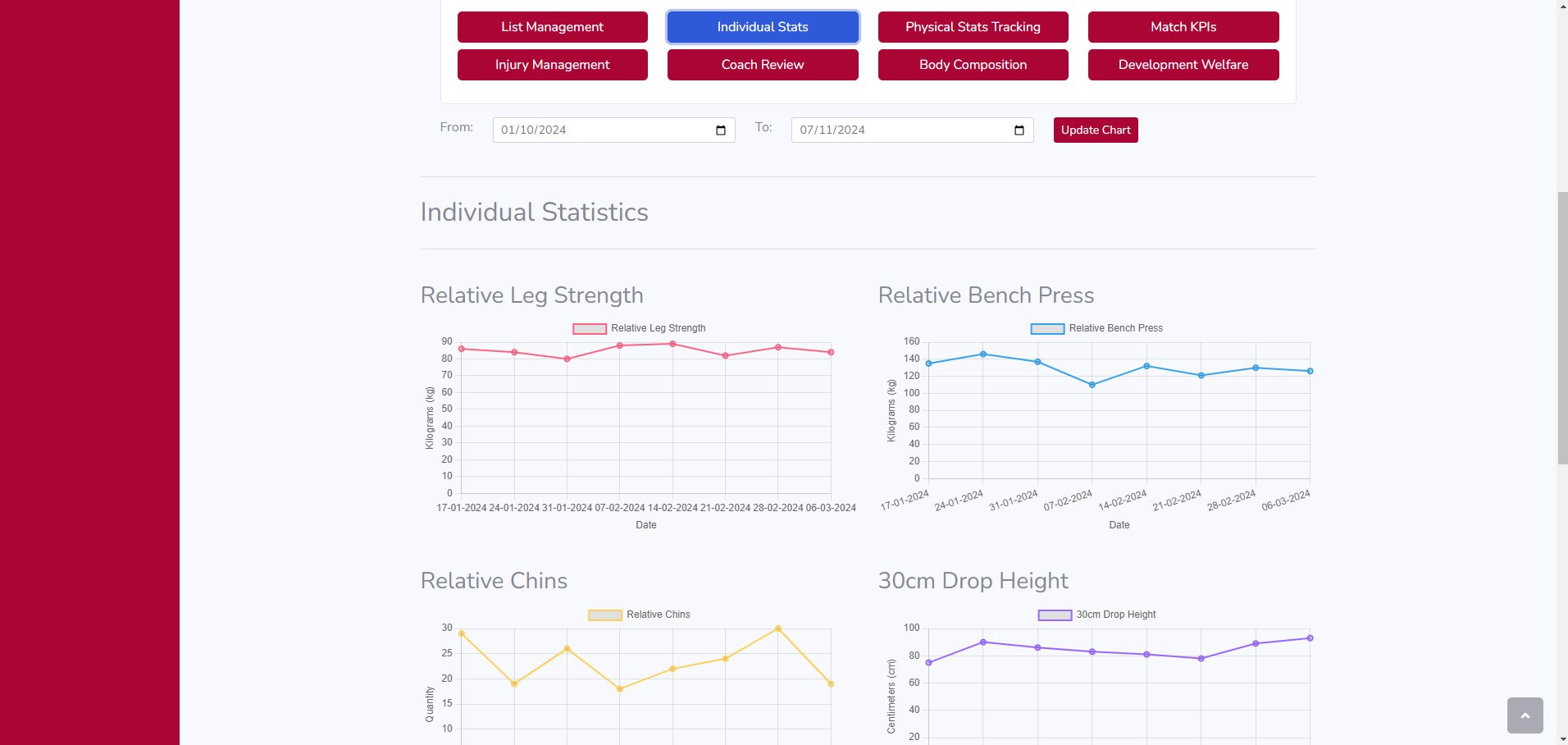Works
Capstone Project, QLD Reds
Team Roster Management Web Application
The Capstone Project was a group initiative completed in our final year at university, consolidating all the skills and knowledge accrued throughout our degree. Groups applied for projects provided by QUT industry partners, and if selected, we worked with our clients to deliver real-world solutions. Our group was granted our first choice: developing a Roster Management Web Application for the QLD Reds to support multiple squads within their High-Performance Unit by presenting collected player data for assessment by their coaching staff.
The project's goal was to enhance player performance and coaching methodologies by centralising player data on a single platform. This consolidation streamlined data management and established a cohesive framework for player assessment. The platform highlighted historical assessments, enabling coaches to monitor player development or regression over time, thus fostering a more informed coaching style. The secure application incorporated visual representations, such as charts and graphs, to illustrate players' metrics and KPIs, along with user accounts with varying permissions to ensure data confidentiality. Developed using synthetic player data and an MVC structure, the system allowed for easy integration of the client's database post-handover. The Queensland Reds envisioned a modular platform, engineered for seamless integration of diverse data types and features, with potential for commercialization and adoption by other organizations. Based on feedback, the Queensland Reds were extremely satisfied with the delivered application, which included all necessary features and additional ones requested later in the project timeline.

My specific role focused on several aspects of the project, including front-end design, particularly the user interface, and the display of data using Chart.js. I also developed the synthetic data used for testing and demonstration purposes. The application was designed as a read-only platform with assigned permissions for each user, allowing tailored access to player statistics and medical history. Users could filter data by date ranges, view player progress through visualizations like line graphs, and navigate between men's, women's, and academy teams. Developed using Node.js and hosted on AWS, the application featured a simple login system and an intuitive user interface based on the SB admin 2 bootstrap template. The architecture followed an MVC approach, ensuring scalability and future growth. User and developer manuals were provided to facilitate future development and deployment, and security measures were implemented to protect sensitive data.
